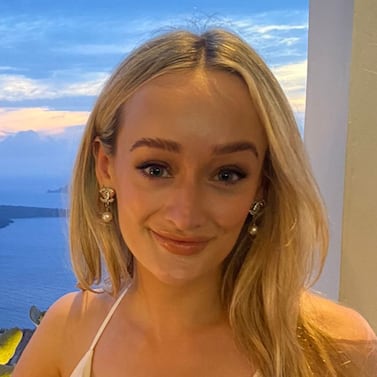
The Business of Fashion
Agenda-setting intelligence, analysis and advice for the global fashion community.

Agenda-setting intelligence, analysis and advice for the global fashion community.

There’s one thing Ariel Ohana, managing partner of investment firm Ohana & Co, definitely doesn’t need to hear a brand pitch: the size of the beauty market.
“[People include] that the beauty industry is worth $27 billion. The global market size is not going to make your company successful. As a beauty investor, I know that, and I’ve already looked at 100 other beauty brands,” he said.
2024′s funding climate is an entirely different beast to that of the post-pandemic boom when valuations soared high, checks were hefty and investors were generally flush with cash. In 2022, beauty companies raised $1.6 billion in venture capital and private equity, per data from capital markets company PitchBook. By 2023, that figure had slumped to $493 million.
It’s a double-edged sword. Venture capital is no longer seen as a jetpack engine to overnight growth. Today, checks from all types of firms are likely smaller and investors more bearish, and founders, despite needing cash, feel more cautious about accepting funds for fear of losing control and governance. But for many businesses, external capital is still needed to unlock growth opportunities, including retail and supplier connections, expertise and unique perspectives.
ADVERTISEMENT
Capturing investors’ attention, and in turn, their resources, is a nuanced process – one that’s more competitive given the number of beauty businesses launching today.
Founders should think of a pitch deck as more teaser than totality. Decks are usually sent out cold, and can be pre- or post-brand launch. Investors can receive hundreds per day, so instead of trying to convey everything about a business from nose to tail, investors say to focus on piquing curiosity.
It should not exceed 20 to 25 pages, said Cristina Nuñez, co-founder and partner at True Beauty Ventures, and needs to answer five key things: who the brand is, the problem it’s solving for, where the market opportunity is, how it’s different and why the consumer should care. “The pitch deck is supposed to be a conversation starter,” said Nuñez. True Beauty Ventures portfolio includes BeautyStat and K18, which was acquired by Unilever in December 2023.
The average investor probably spends “two and half minutes max,” looking over the deck, said Deborah Benton, founder and managing partner of Willow Growth Ventures, which has invested in Bubble and Kosas. Instead of overloading the deck with fine print, Benton said to remember the main goal of a pitch deck is to get a follow-up call with an investor.
“Outline where you see the problem and the opportunity. Once you’ve clearly defined that, you need to make it clear – qualitatively or quantitatively – why you are and your product is the one to seize that,” said Benton, adding that “spoon-feeding” information is advisable.
There’s a sweet spot experts say, when it comes to sensitive information. It’s advisable to not disclose things like employee names or trade secrets, especially if a deck is going to be circulated broadly. But disclose too little, and investors get turned off: “I need some indication of where you are in your lifecycle,” said Benton.
In terms of financial information, clarity is key, said Kelly Dill, a partner at Imaginary Ventures, which counts Glossier, Bread Beauty Supply and Ami Colé in its portfolio. “[We need] to know, what are your unit economics, how profitable are you, what are your repeat metrics and what is your cash burn like?” she said, adding that she shouldn’t have to “dig around” for that in the deck.
ADVERTISEMENT
Once an investor is sitting down to talk with a business, they’re interested – but they still need to get excited.
“As a venture investor, I’m looking to see venture growth,” said Dill. But a hockey stick graph isn’t enough – any inflection point needs to be borne out with real, actionable steps, be that signing a retailer, launching a full-scale marketing campaign or partnering with a famous ambassador.
Ohana said any early signs of growth are valuable, whether that’s a top ranking at retailers, strong direct to consumer growth or even sign-ups to marketing emails. Another key way to show traction, Ohana said, is demonstrating repeat purchases with high efficiency, and without over-reliance on costly digital marketing.
At these secondary meetings, poor knowledge of key business metrics can trip a lot of founders up. Most investors said they would expect founders or chief executives to know what their customer acquisition costs are, average order value, repeat rate and which channels are most efficient for them.
Founders that take the time to research prospective investors have a leg-up. Many investment firms detail on their website their average check size, the kinds of businesses they invest in and what growth stage they are interested in. Aligning with those criteria often gives labels a more likely chance for a meeting.
Many firms are tightly selective with their internal objectives; for Willow Growth Partners, it’s early stage private equity, with a check size of around $750,000 to $1.25 million.
Ohana said the primary difference between different firms from venture capital to family office is exit horizons. “A family office may not be looking for a rapid exit,” he said. While all investors are attracted to robust businesses with good unit economics, and a powerful founder story, Ohana added to be ready for tough questions: “the expectation to see a profitable company is now coming much faster,” he said.
However, a no is not the end of the road. “One question every founder should ask investors is, ‘If not you, who?’,” said Nuñez. Investors have tight mandates, and if they have to pass on a company, someone else within their network might be a better fit.
ADVERTISEMENT
Even in this tougher fundraising climate, investors see plenty of opportunity for the beauty sector. “Ask yourself, what is your very special unfair advantage that creates a moat that gives the investor belief that you will be the one to win?” said Benton.
Beauty brands are readying for another tumultuous year. Demand is strong, but growth remains challenging with rising customer acquisition costs and a bearish funding climate.
The last of now-bankrupt Amyris’ consumer brands have new owners.

Daniela Morosini is a Beauty Correspondent at The Business of Beauty at BoF. She covers the global beauty industry, with an interest in how companies go to market and overcome hurdles.
As awareness grows about the perils of sleep deprivation, beauty and wellness brands are flooding the market with an array of products to cash in on the booming opportunity.
Going public is usually a pivotal moment in a company’s history, cementing its heavyweight status and setting it up for expansion. In L’Occitane’s case, delisting might be a bigger conduit for growth.
Brands say they’re barreling ahead with marketing and commerce on the app, even as the clock starts ticking for owner ByteDance to sell it or shut it down.
The Spanish beauty and fashion conglomerate’s smart acquisitions and diverse portfolio could be a big draw for investors. Plus, Adidas is set to confirm its stellar first quarter.